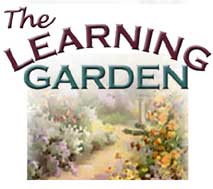
From Seed to Seed:
Plant Science for K-8 Educators
 |
From Seed to Seed: |
|
| Activity
5: Peanuts-R-Us
Grades: K-4 Associated Lesson Topics:
National Standards:
Planting the Seed... What can you tell me about peanuts? Where do you think they come from? Once you have collectively come to the conclusion that peanuts are seeds... What do you think we need to do to get peanuts to germinate? Will peanuts still germinate even if they are not soaked in water overnight? Teacher Information: Students are most familiar with peanuts as a snack food. They may be surprised to learn that peanuts are actually seeds; that is, they actually contain an embryo (baby plant) and endosperm (food supply). This food supply makes peanuts high in protein. In this activity-which can be done in the classroom, but is best-suited for the garden-students will germinate peanuts and learn that they are more than just a snack food! Remember that some students may be allergic to peanuts. It will take four to five months for the plants to produce any peanuts.
This may seem like an eternity, but it is actually a wonderful time to
observe different stages of pla Necessary Materials:
Note: This same activity can be conducted with corn. Buy corn on the cob fresh from the grocery store. Have students carefully remove the kernels from the corncob. Place the kernels between moistened paper towels in a sealable plastic bag. Once the seeds have germinated, move them to pots or into the garden and continue the activity as described below. How else (other than corn on the cob) do we eat corn (e.g., popcorn, tortillas, cornbread)? As a history extension, students can research how the Native Americans used corn. Procedure:
Harvesting the crop... This lesson can be extended to consider the nutritional benefits that
humans receive from plants. For example, after harvesting the peanuts,
students can investigate how protein benefits the human body. Alternatively,
students can research how other cultures use peanuts in their daily lives.
The Growing Ideas article linked to this activity provides suggestions
on how to use peanuts in several disciplines. Please click the BACK button on your browser to return to the course. |
||
|
Made possible by a grant from Oracle Corp. Copyright 2001, National Gardening
Association, Inc. For questions regarding this web site, contact Webmaster |